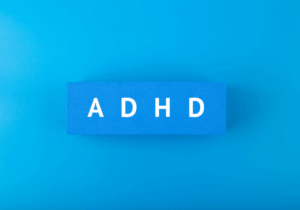Bipolar spectrum conditions are mood disorders that cause intense shifts between periods of euphoria or irritability (mania or hypomania) and states of deep sadness or emotional emptiness (depression). These changes cannot be explained by everyday life events and often significantly impact personal, social, and professional life.
Although often misunderstood as simple “mood swings,” bipolar disorder is a clinical condition that requires understanding, proper treatment, and professional support.
What are bipolar spectrum conditions?
The bipolar spectrum includes a group of disorders characterized by alterations in mood, energy, thinking, and behavior. The most common types include:
- Bipolar I Disorder: Involves intense manic episodes that typically alternate with periods of depression.
- Bipolar II Disorder: Includes major depressive episodes combined with hypomanias (a milder form of mania).
- Cyclothymia: Frequent but milder mood swings that can evolve into more severe forms if left untreated.
- Other spectrum disorders: Include atypical forms or those induced by substances or medical conditions.
Episodes may last for days, weeks, or even months, and vary in intensity and frequency from person to person.
When left untreated, bipolar disorder can lead to serious consequences in mental, physical, and social health:
- Emotional and relational instability: Difficulty maintaining stable relationships due to unpredictable mood shifts.
- Academic or work problems: Disruptions in performance, abandonment of projects, or impulsive behavior.
- Risky behavior: Impulsive decisions, excessive spending, promiscuity, substance use, or dangerous behavior during manic episodes.
- Severe depressive episodes: Feelings of guilt, hopelessness, social isolation, and suicide risk.
- Stigma and misdiagnosis: Many individuals go years without a clear diagnosis, making it harder to access proper treatment.
The longer the delay in diagnosis or intervention, the higher the risk of intensified episodes and a decline in quality of life.
Treating bipolar disorder requires a sustained, personalized, multidisciplinary approach. Some of the most important pillars include:
- Mood stabilizing medications: Such as lithium, anticonvulsants, or antipsychotics to help prevent extreme mood swings.
- Psychotherapy: Especially cognitive behavioral therapy, interpersonal and social rhythm therapy, or psychoeducation to help recognize symptoms, establish healthy routines, and manage stress.
- Stable routines and lifestyle: Maintaining regular sleep, eating, and work schedules can prevent relapses.
- Support network: The active involvement of family, friends, or support groups is key in everyday support.
- Ongoing monitoring: Bipolar disorder treatment requires regular check-ups to adjust medications, prevent relapses, and assess overall well-being.
Living with a bipolar spectrum condition can be challenging—but not impossible.
With the guidance of specialized professionals, individuals can:
- Obtain an accurate diagnosis, differentiating bipolar disorder from other mood disorders.
- Establish comprehensive treatment tailored to each stage of the process.
- Work through illness awareness, fears, and stigma.
- Foster autonomy, emotional self-regulation, and a more balanced life.
Professional intervention does more than treat symptoms—it restores hope, strengthens relationships, and rebuilds life goals.
Bipolar conditions do not define a person, but they do present a challenge that requires understanding, commitment, and continuous support. With proper treatment, professional guidance, and a supportive environment, it’s possible to live a stable, meaningful, and fulfilling life.
Asking for help is not a sign of weakness—it’s an act of courage. Balance is possible, and it starts with the first step: speaking up and seeking guidance.






